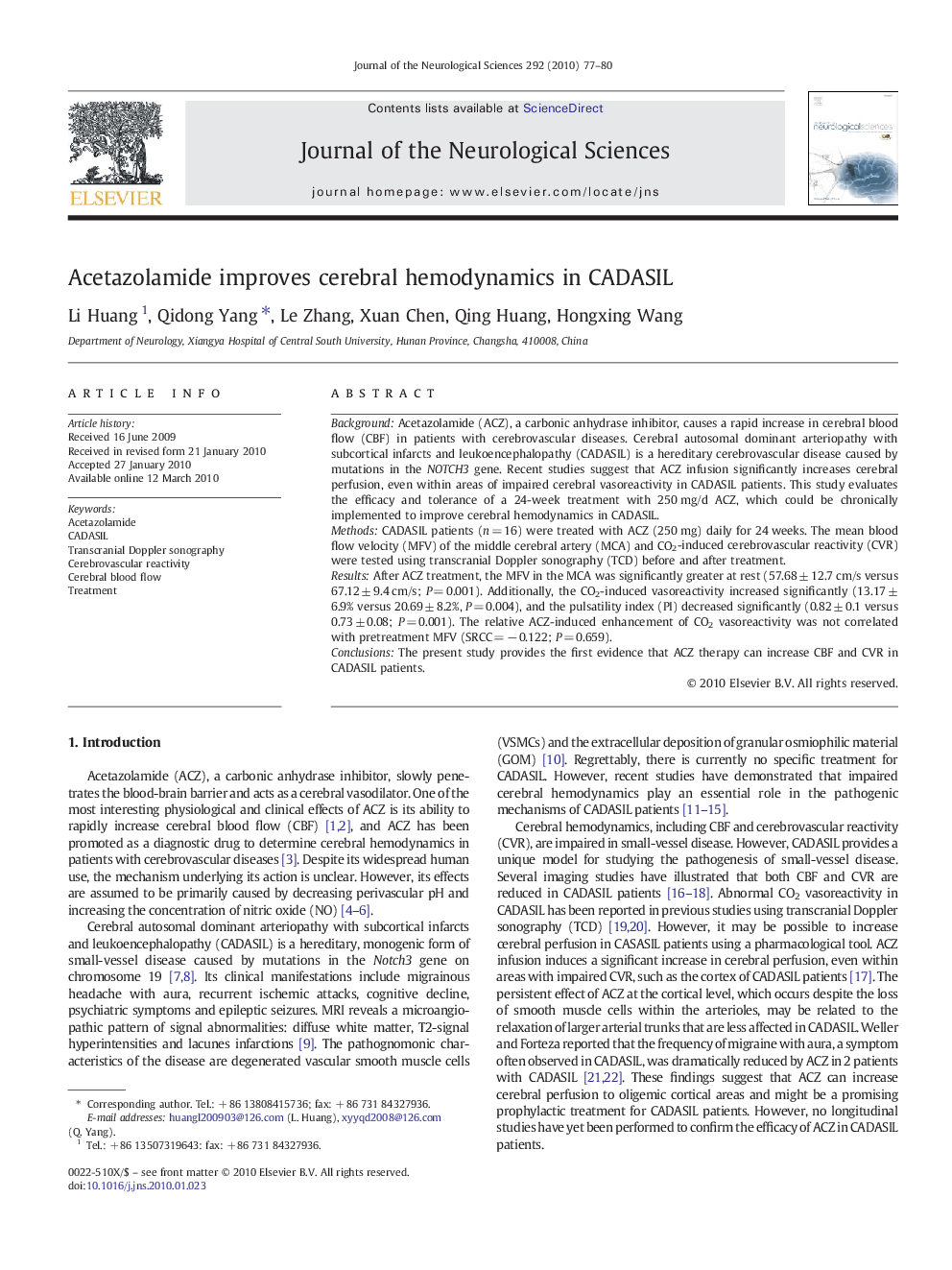| Article ID | Journal | Published Year | Pages | File Type |
|---|---|---|---|---|
| 1914606 | Journal of the Neurological Sciences | 2010 | 4 Pages |
BackgroundAcetazolamide (ACZ), a carbonic anhydrase inhibitor, causes a rapid increase in cerebral blood flow (CBF) in patients with cerebrovascular diseases. Cerebral autosomal dominant arteriopathy with subcortical infarcts and leukoencephalopathy (CADASIL) is a hereditary cerebrovascular disease caused by mutations in the NOTCH3 gene. Recent studies suggest that ACZ infusion significantly increases cerebral perfusion, even within areas of impaired cerebral vasoreactivity in CADASIL patients. This study evaluates the efficacy and tolerance of a 24-week treatment with 250 mg/d ACZ, which could be chronically implemented to improve cerebral hemodynamics in CADASIL.MethodsCADASIL patients (n = 16) were treated with ACZ (250 mg) daily for 24 weeks. The mean blood flow velocity (MFV) of the middle cerebral artery (MCA) and CO2-induced cerebrovascular reactivity (CVR) were tested using transcranial Doppler sonography (TCD) before and after treatment.ResultsAfter ACZ treatment, the MFV in the MCA was significantly greater at rest (57.68 ± 12.7 cm/s versus 67.12 ± 9.4 cm/s; P = 0.001). Additionally, the CO2-induced vasoreactivity increased significantly (13.17 ± 6.9% versus 20.69 ± 8.2%, P = 0.004), and the pulsatility index (PI) decreased significantly (0.82 ± 0.1 versus 0.73 ± 0.08; P = 0.001). The relative ACZ-induced enhancement of CO2 vasoreactivity was not correlated with pretreatment MFV (SRCC = − 0.122; P = 0.659).ConclusionsThe present study provides the first evidence that ACZ therapy can increase CBF and CVR in CADASIL patients.
